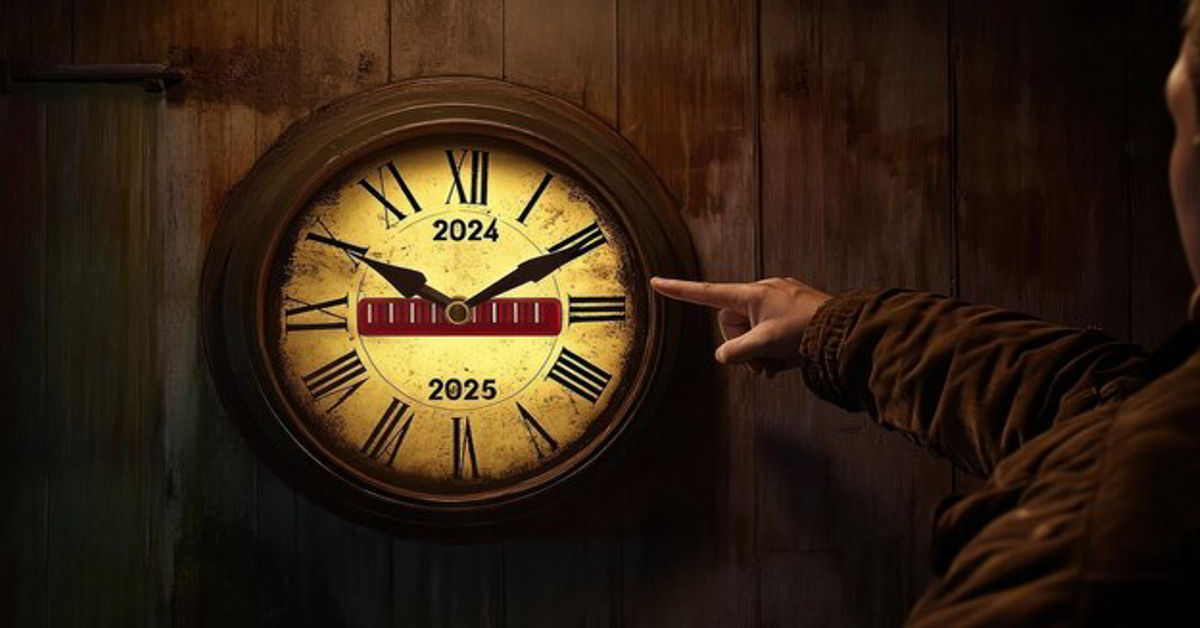The measurement of time is something we rely on every day but most people rarely stop to think about how many hours are in a year. Knowing this number is not just a matter of curiosity. It has practical uses in areas such as project planning, business operations, payroll calculations, scientific studies, and even personal productivity tracking. For example, if you are managing a yearly project, understanding exactly how many hours you have helps in breaking down tasks and deadlines more accurately. This concept becomes even more interesting when considering leap years, different calendar systems, and astronomical events that slightly change our measurement of a year. By exploring the variations and uses of year-hour calculations, we gain a deeper understanding of how time is structured and how it influences both our daily activities and large-scale operations across the world.
Standard Year vs Leap Year Hours
A standard year, also known as a common year, has 365 days. Since each day has 24 hours, a simple multiplication gives us the total hours in a standard year. Leap years, which occur every four years except in certain century years, have 366 days. The additional day comes from the adjustment needed to keep our calendar in sync with Earth’s orbit around the Sun. This extra day adds an additional 24 hours to the total. Understanding this difference is important in time-sensitive calculations, such as annual budgets or astronomical measurements. Businesses and governments also take leap years into account when calculating salaries, contracts, or service durations. While the variation between a common and leap year is only one day, it still creates a measurable impact over long periods, especially in scientific and statistical records.
| Year Type | Days in Year | Hours per Day | Total Hours in Year |
| Common Year | 365 | 24 | 8,760 |
| Leap Year | 366 | 24 | 8,784 |
Calculating Hours in a Year Step-by-Step
To calculate the hours in a year, you start with the basic formula of multiplying the number of days in a year by the number of hours in a day. For a common year, it is 365 × 24, which equals 8,760 hours. For a leap year, it is 366 × 24, giving 8,784 hours. This calculation assumes that every day has exactly 24 hours, but in reality, the rotation of the Earth is not perfectly constant. For precise astronomical calculations, adjustments such as leap seconds are sometimes added to Coordinated Universal Time (UTC) to keep clocks in sync with Earth’s actual rotation. However, for everyday purposes, using 24 hours per day is accurate enough. This simple approach allows you to quickly determine time spans for annual projects, contracts, and event planning without relying on complex astronomical data.
Hours in Different Time Systems
Not all cultures and historical periods have measured the year in the same way. For example, the ancient Egyptians used a solar calendar of 365 days, while the Maya developed a complex system involving multiple interlocking cycles. In some lunar calendars, such as the Islamic Hijri calendar, a year is shorter, about 354 or 355 days. This difference changes the total number of hours significantly. Even in the modern world, some industries use alternative timekeeping systems for specialized purposes. Astronomers sometimes refer to the sidereal year, which is the time it takes Earth to complete one full orbit relative to the fixed stars, slightly different from the tropical year used in our calendar. These differences show that the number of hours in a year is not fixed across all contexts, making it important to define the specific calendar system you are using before performing calculations.
| Calendar Type | Days in Year | Hours in Year |
| Gregorian Common | 365 | 8,760 |
| Gregorian Leap | 366 | 8,784 |
| Islamic Hijri | 354 | 8,496 |
| Ancient Egyptian | 365 | 8,760 |
| Sidereal Year | 365.25636 | 8,765.5 |
Work Hours in a Year for Different Countries
When we shift our focus from total hours in a calendar year to actual working hours, the numbers change considerably. Most countries have laws or guidelines on standard work hours per week. Multiplying these by the number of weeks in a year gives us annual work hours, but we must also subtract public holidays, vacation days, and sick leave. For example, in the United States, a standard 40-hour work week over 52 weeks results in 2,080 hours, before accounting for time off. In Germany, where workers enjoy more vacation days, the total work hours can be much lower. This calculation is essential for companies when planning labor budgets, productivity goals, and staffing needs, as well as for individuals tracking career hours over time.
| Country | Weekly Hours | Weeks/Year | Avg Vacation Days | Work Hours/Year |
| USA | 40 | 52 | 10 | ~2,000 |
| Germany | 38 | 52 | 20 | ~1,850 |
| Japan | 40 | 52 | 10 | ~2,000 |
| France | 35 | 52 | 25 | ~1,680 |
Historical Changes in Year Measurement
The number of hours in a year has not always been defined the way it is today. Ancient civilizations created various calendars based on observations of the Sun, Moon, and stars, and these systems often had slightly different year lengths. The Julian calendar, introduced by Julius Caesar in 45 BCE, set a year at 365.25 days, leading to a leap year every four years. However, small inaccuracies over centuries caused drift, prompting the introduction of the Gregorian calendar in 1582. The Gregorian reform fine-tuned the leap year rule, removing three leap years every 400 years to better align with Earth’s orbit. While these changes seem minor, they affected the way time was tracked in daily life, agriculture, and navigation. As astronomical tools became more advanced our ability to measure time with extreme precision improved, leading to modern corrections like leap seconds.
| Calendar System | Year Length (Days) | Hours in Year |
| Ancient Egyptian | 365 | 8,760 |
| Julian Common Year | 365 | 8,760 |
| Julian Leap Year | 366 | 8,784 |
| Gregorian Common | 365 | 8,760 |
| Gregorian Leap | 366 | 8,784 |
Impact of Leap Seconds on Year Hours
Leap seconds are tiny adjustments added to our timekeeping system to keep atomic clocks synchronized with Earth’s slightly irregular rotation. While these additions may seem insignificant, they are crucial for systems like GPS navigation, international communication networks, and astronomical observations. A leap second is an extra second occasionally added to the last minute of a day, meaning one day in that year could have 86,401 seconds instead of the usual 86,400. When you convert seconds into hours for a year that includes a leap second, the total increases by just a fraction of an hour. Although this difference is almost invisible in everyday life, in high-precision fields like satellite positioning, even one second can make a measurable difference. The need for leap seconds is determined by scientific monitoring of Earth’s rotation and is announced months in advance.
| Year Type | Leap Seconds Added | Hours in Year (Approx) |
| Common Year | 0 | 8,760 |
| Leap Year | 0 | 8,784 |
| Leap Second Year | +1 second | 8,760.00028 |
Hours in a Year in Space and Astronomy
Astronomy offers a different perspective on how many hours are in a year. When scientists refer to a year, they often specify whether they mean a tropical year, sidereal year, or anomalistic year, each slightly different in length due to the Earth’s elliptical orbit and the precession of the equinoxes. A sidereal year is about 365.25636 days, leading to approximately 8,765.5 hours, while the tropical year — which our Gregorian calendar follows — is slightly shorter. In planetary science, a “year” is defined by how long it takes a planet to complete one orbit around the Sun. For example, a Mars year is about 687 Earth days, while Jupiter’s year lasts nearly 12 Earth years. Understanding these distinctions helps scientists calculate planetary motion, satellite orbits, and mission timelines for space exploration.
| Planet | Days in Year (Earth Days) | Hours in Planet Year |
| Earth | 365.2422 | ~8,765.8 |
| Mars | 687 | ~16,488 |
| Jupiter | 4,333 | ~103,992 |
| Mercury | 88 | ~2,112 |
Practical Uses of Year-Hour Calculations
Knowing the exact number of hours in a year can be highly useful in various fields. In engineering, energy production rates are often expressed in kilowatt-hours per year, requiring precise annual hour figures for accurate forecasting. In aviation, pilot working limits are tracked in hours per year to ensure safety compliance. Financial analysts use annual hour calculations when modeling staff costs, especially for contractors billed by the hour. Environmental scientists measure carbon emissions per hour and multiply by the total hours in a year to estimate annual outputs. Even in personal goal setting, such as tracking study hours or exercise routines, understanding the yearly time budget can help with realistic planning. The calculation also supports industries like agriculture, where seasonal work patterns depend on yearly time cycles.
Common Misconceptions About Year Length
A common misunderstanding is that every year is exactly 365 days. In reality, our planet’s orbit is not perfectly aligned with the calendar, which is why we have leap years and occasionally leap seconds. Another misconception is that all calendars are the same length. As noted earlier, lunar calendars are shorter than solar calendars, resulting in fewer hours per year. Some people also mistakenly believe that daylight saving time changes the number of hours in a year. In truth, while clocks are adjusted forward or backward by an hour in certain regions, the total number of hours in a year remains the same — it is simply distributed differently between daylight and nighttime. These misconceptions often arise from casual timekeeping practices, but they can cause confusion in scientific, technical, and financial contexts where accuracy matters.
Conversion Tables for Quick Reference
Below are some quick-reference tables to convert years into hours, minutes, and seconds for common year types.
Year-to-Hours Conversion Table
| Year Type | Hours | Minutes | Seconds |
| Common Year | 8,760 | 525,600 | 31,536,000 |
| Leap Year | 8,784 | 527,040 | 31,622,400 |
| Sidereal Year | 8,765.8 | 525,948 | 31,556,928 |
Partial Year to Hours Conversion
| Fraction of Year | Hours in Common Year | Hours in Leap Year |
| 1/2 year | 4,380 | 4,392 |
| 1/4 year | 2,190 | 2,196 |
| 1 month avg | ~730 | ~732 |
| 1 week | 168 | 168 |
Conclusion
The question of how many hours are in a year may seem simple, but the answer reveals layers of complexity depending on the calendar system, astronomical measurements, and real-world applications. A standard year contains 8,760 hours, while a leap year has 8,784. Beyond that, variations like leap seconds, sidereal years, and different planetary years highlight how time measurement is both a human construct and a reflection of natural phenomena. Understanding these differences is more than just trivia — it has direct applications in science, business, and daily planning. Whether you are calculating annual work hours, planning a scientific mission, or simply curious about the passage of time, knowing the hours in a year provides a valuable foundation for accurate time-based reasoning.
FAQ Section
Q1: How many hours are in a leap year?
A leap year has 8,784 hours, which is 24 hours more than a common year.
Q2: Does daylight saving time change the total hours in a year?
No, daylight saving time does not change the total hours in a year; it only shifts the distribution of daylight across days.
Q3: How many hours are in a sidereal year?
A sidereal year is about 8,765.8 hours long.
Q4: Why do we have leap years?
Leap years keep our calendar in sync with Earth’s orbit, adding one extra day every four years.
Q5: Do other planets have the same number of hours in a year as Earth?
No, each planet’s year is based on how long it takes to orbit the Sun, so their year lengths vary greatly.







